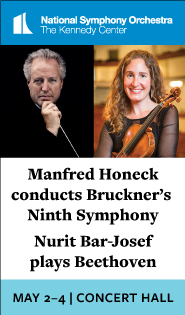Annapolis Chamber Music Festival offers a rich oasis in dry late summer

The Annapolis Chamber Music Festival performed Saturday night at St. Martin’s Evangelical Lutheran Church.
Late August is a desert for classical music in the Washington area. Just when most presenters have finished their summer season and have not yet started the new one, the Annapolis Chamber Music Festival offers two weekends of intimate music for unusual combinations of instruments. On Saturday evening St. Martin’s Evangelical Lutheran Church hosted the final concert of this year’s festival, the first complete run since the arrival of Covid-19.
Bassoonist Rémy Taghavi and double-bassist Zachary Hobin co-founded the festival in 2016, to create a platform for chamber music featuring their under-utilized instruments. For the grand finale to this revived event, a large ensemble of young musicians performed three unusual works in various combinations.
Taghavi starred first in Ciranda das sete notas, composed in 1961 by Heitor Villa-Lobos, in an arrangement for bassoon and string quintet. The game it evokes, a ciranda, is a circular dance, changing direction in time with folk rhythms on traditional percussion instruments. The “seven notes” of the title are an upward pattern introduced by the strings in the piece’s opening measure, a C major scale that does not arrive back at C but turns downward to A.
On the demanding solo part, Taghavi dazzled with his precise fingerwork on burbling runs and impeccable breath support. He also mastered the work’s wide range, from the instrument’s lowest notes up to its extreme heights, a high D held for two long measures. In the middle section, he moved elegantly through the astounding large leaps, requiring smooth register shifts, as well as making the sometimes gawky bassoon lyrical and melodious.
Lush, restrained accompaniment came from the string quintet of violinists Maya Lorenzen and George Meyer, violist Fitz Gary, cellist Madeline Fayette, and Zachary Hobin on double-bass. In a highlight moment, Taghavi’s exposed solo explored the upper reaches of the bassoon, over the oscillating minor 9th of Hobin’s bass, the latter recalling a motif reminiscent of the ominous shark theme of Jaws. Returning to the main theme at the end, Taghavi rose slowly up the C major scale in his top octave, after which that simple motif finally achieved the conclusion it yearned for, a unison C.
The same string quintet returned, with the violinists switching seats, for Robert Schumann’s Adagio and Allegro, in an arrangement by Seonyoung Hwang. French horn player Wilden Dannenberg took the solo part, often played on the cello instead. He traded longing phrases in the Adagio with first violinist George Meyer, on the aching first theme that could have inspired Wagner’s famous Leitmotif for the love potion in the first act of Tristan und Isolde.
Dannenberg brought a valiant brightness to the difficult high-flying triplets in the Allegro, skilfully minimizing a few minor slips. His playing was most effective when that pining Adagio theme resurfaced, exchanged at times with cellist Madeline Fayette. It was a nice touch to juxtapose this piece with the string quintet version of the Villa-Lobos, and it certainly made a case for this larger chamber arrangement of the Schumann.
All of the musicians, except the violinists, returned for the final work, an octet arrangement of the Brahms Serenade No. 2, an orchestral work heard in an outstanding rendition by the National Symphony Orchestra this past June, led by Marek Janowski. This reduction by Frank Morelli simplified the doubled woodwind and horn parts down to a wind quintet, still somewhat overpowering the single viola, cello, and double-bass.
Hobin often provided a solid foundation on the double-bass, especially in some of the long pedal-point sections. Intonation issues cropped up in flute and oboe, but the ensemble mostly obtained a hearty balance. Both of the dance-like movements skipped buoyantly and fast, on either side of a more solemn central slow movement. The fourth movement (“Quasi Menuetto”), slightly more gentle, proved the highlight, especially the quieter trio section centered on the pleading oboe of Charles Huang.
The swells of Dannenberg’s horn powered the mysterious middle section of the third movement, while the Finale bubbled with earthy jollity, featuring outstanding solo work by clarinetist Graeme Steele Johnson. Flutist Amir Farsi added a final note of glee with some acrobatic turns on the piccolo, rounding out a worthy program that would ornament any season of the year, fallow or not.
The Annapolis Chamber Music Festival will return in August 2023. chambermusicannapolis.org







